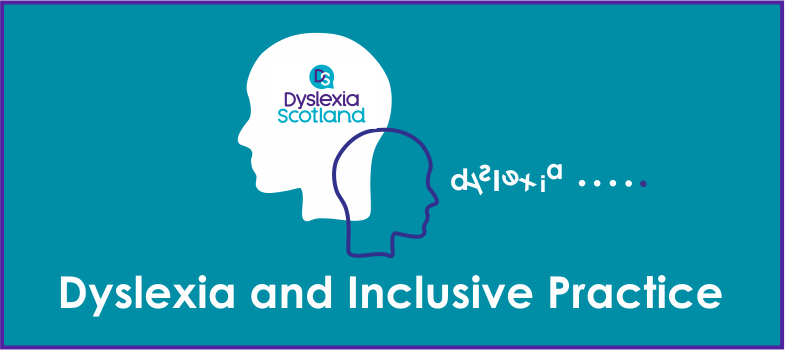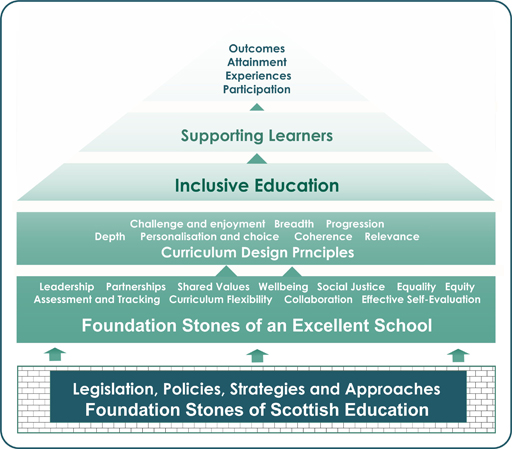2.1.1 Developing an inclusive curriculum
Fig 1 Section 1 highlights that the Scottish Education system is designed to be inclusive and this is supported by equality and educational legislation, and policies which include Curriculum for Excellence.
The original report of the Curriculum Review Group, A Curriculum for Excellence (Scottish Executive, 2004) indicated that all children and young people should be successful learners, confident individuals, responsible citizens and effective contributors to society and at work. By providing accessible structure, support and direction to young people's learning, the curriculum should enable them to develop these four capacities. The curriculum should complement the important contributions of families and communities.
The design principles which schools, teachers and other educators should use to develop and implement the curriculum are:
- Challenge and enjoyment
- Breadth
- Progression
- Depth
- Personalisation and choice
- Coherence
- Relevance
The foundations of an accessible curriculum which can meet the needs of all learners as highlighted in figure 12 is based on the inclusive legislation framework which underpins educational planning and curriculum design.
The 2014 Making Sense report highlighted that overall the tariff score shows that young people with dyslexia achieve their set of qualifications at a level which is less than 60% of the national average. Given that dyslexia is not connected to cognitive ability, it is necessary that schools and local authorities consider their duty and requirements to plan and provide a curriculum which will support all learners to achieve to the best of the ability and achieve a positive outcome.
2.1 Developing an inclusive curriculum

